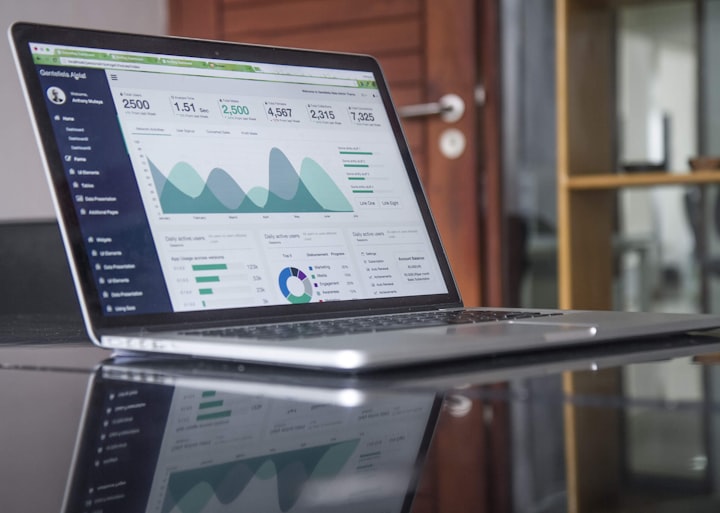Data-Driven Design Decisions: Revolutionizing UI/UX with User Insights
Harnessing Analytics for Enhanced User Experiences and Design Precision

In today's digital landscape, UI/UX designers go beyond aesthetics and functionality. They integrate data-driven methodologies into the design process to create more intuitive, user-centric digital products.
This technique involves using user data and analytics to guide design choices, which can lead to a better user experience and more successful products. This article will explore how UI/UX designers can use data to inform design decisions, enhance user interactions, and effectively measure success.

The Imperative of User Data in Design
Collecting Comprehensive User Data: The foundation of data-driven design is collecting diverse user data. This encompasses quantitative metrics, such as page views, click-through rates, and session durations, obtained through analytics tools like Google Analytics, Hotjar, and Adobe Analytics.
Additionally, qualitative insights gathered through user interviews, surveys, and feedback forms provide context to the numbers, offering a holistic view of user behavior and preferences.
Analyzing Behavioral Patterns: By analyzing user interactions with digital products, designers can identify trends and patterns in user behavior. This data can reveal areas of friction, unmet needs, and opportunities for enhancement. With a deep understanding of how users navigate a website or application, designers can pinpoint which elements attract the most attention and create navigational challenges. This information helps designers to optimize the user experience, improving the overall functionality and usability of the product.

Leveraging Data for Informed Design Decisions
Informed Layout and Navigation Improvements: Data analytics reveal how users interact with various elements of a digital product, guiding designers in optimizing layout and navigation.
For example, heatmaps can illustrate areas of a webpage that receive the most clicks, helping designers strategically place key information or call-to-action buttons to improve user engagement and conversion rates.
A/B Testing to Perfect User Experiences: A/B testing, a cornerstone of data-driven design, empowers designers to make empirical decisions. By comparing two versions of a design element, designers can assess which version better aligns with user preferences and business objectives.
This methodical testing can apply to anything from button colors to content placement, ensuring that even the most minor details are optimized for user engagement.

The Role of User Feedback and Predictive Analytics
Integrating User Feedback for a Holistic Approach: Combining quantitative data with qualitative feedback from users allows designers to address the 'why' behind user behaviors.
This integration facilitates the development of designs that attract users and provide them with a satisfying and fulfilling experience. Regularly soliciting and incorporating user feedback ensures that designs align with user expectations and evolving needs.
Predictive Analytics for Forward-Thinking Design: The advent of predictive analytics and machine learning offers unprecedented opportunities for anticipating user needs. These technologies can forecast future actions by analyzing user behaviors, enabling designers to tailor experiences proactively. For instance, if data predicts an increase in mobile usage, designers can prioritize mobile-first design strategies to meet users' future needs.

Key Performance Indicators (KPIs) and Continuous Improvement
Establishing and Monitoring KPIs: Success in data-driven design is measured by specific KPIs, such as user engagement rates, conversion rates, and retention metrics. These indicators help quantify the effectiveness of design decisions, guiding ongoing adjustments and optimizations. By continuously monitoring these KPIs, designers can validate the impact of their work and identify areas for further improvement.
Embracing a Cycle of Continuous Improvement: The digital world is ever-changing, and so are user preferences and behaviors. A successful data-driven design approach embraces the concept of continuous learning and adaptation. This entails regular data analysis, user feedback collection, A/B testing, and iterative design refinements to keep pace with evolving user needs and technological advancements.

Case Studies and Practical Applications
Enhancing E-commerce Experiences: An e-commerce company utilizes user data to redesign its product pages, leading to a significant uplift in sales. Data revealed that users abandoned their carts due to a complicated checkout process. Simplifying the process and adding clear, actionable call-to-action buttons based on heatmap analysis improved user satisfaction and conversion rates.
Optimizing Content Delivery for Media Platforms: A media platform employs machine learning algorithms to analyze user interaction data, enabling personalized content recommendations. The platform delivers tailored content by understanding user preferences and consumption patterns, increasing user engagement and time spent on the site.
Conclusion:
The Future is Data-Driven
Integrating user data and analytics into UI/UX design processes marks a significant evolution in how designers approach their craft. This data-driven paradigm enhances the user experience by making it more personalized and intuitive and plays a pivotal role in achieving business objectives through increased engagement and conversions.
As technology advances, the potential for even more sophisticated data analysis and predictive modeling promises to refine further and revolutionize the UI/UX design field. Designers who adeptly leverage these tools and methodologies will
About the Creator
steve mathews
A passsionate UI/UX designer. I'll be posting more about the UI/UX trends and the updates happeing in the UI/UX world.






Comments
There are no comments for this story
Be the first to respond and start the conversation.